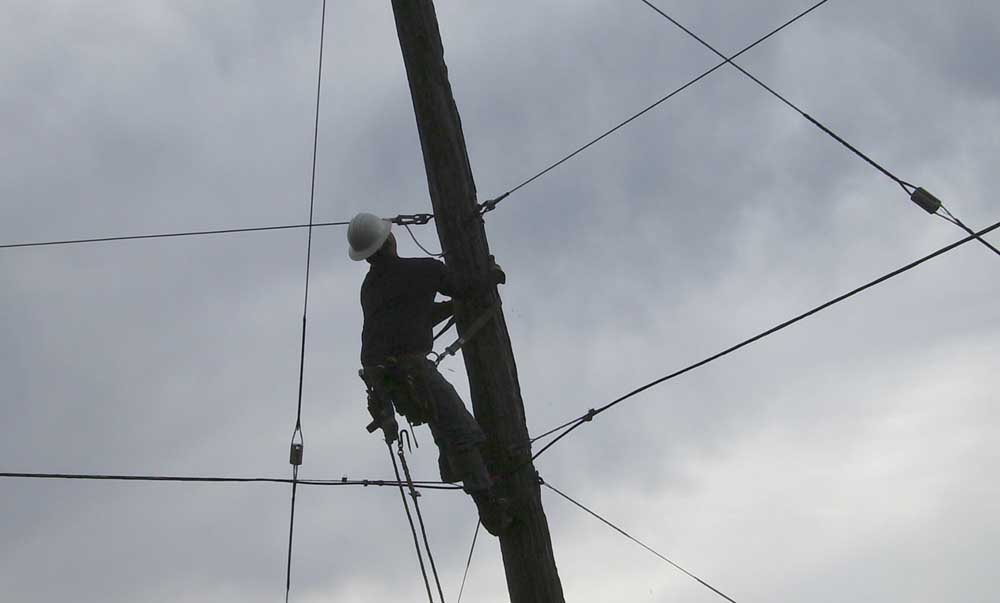Talent power safety settings behind 70 summer outages now switched off
Published 3:00 pm Friday, November 1, 2024

- State Sen. Jeff Golden said he believes Pacific Power is taking the issue seriously, but he hoped it would approach the problem with the same gravity as if it were their “parents and grandparents” experiencing the outages.
Pacific Power has dialed down the enhanced safety settings that contributed to more than five dozen outages in Talent over the course of the summer wildfire season.
Some 70 outages in Talent during fire season, which lasted from June 7 through Oct. 28, were linked to enhanced safety settings, according to emails from Pacific Power communications specialists Omar Granados and Simon Gutierrez.
The power company confirmed that high-sensitivity grid equipment settings — designed to mitigate wildfire risk — were switched off this week after fire season ended in Jackson and Josephine counties.
The frequent, unexpected outages prompted Talent city officials to take measures such as installing backup generators.
The Oregon Public Utilities Commission received seven complaints from customers due to the frequency and duration of outages in Talent during the summer months, according to information provided by PUC spokeswoman Kandi Young. One of those complaints was a petition with 47 signatures.
The PUC has told customers who complained that the state agency was aware of the outages in Talent, according to Young.
“As wildfire is a now constant risk during the summer months, the balance between reducing wildfire risk while continuing to provide a critical service is a challenge,” the PUC told customers. “PUC staff is aware of the increased outages in Talent and is working closely with Pacific Power to develop a targeted and effective approach to protect communities from wildfire without increasing the safety risk inherent in prolonged outages.”
Oregon Rep. Pam Marsh, D-Ashland, announced on social media earlier this week that Pacific Power was switching to less sensitive settings with the close of fire season.
Marsh said in an email that she anticipates that utilities will likely implement more safety measures because electrical utilities face high risks, and fires can spark even when a utility has done “everything right.”
“Until we figure out how to manage that risk, our utilities are going to err on the side of more and more safety measures, even when that threatens reliability of the system,” Marsh said. “A utility would much rather face a cranky customer than see that customer in court after his/her house burned down.”
Gutierrez stated in his email that Pacific Power “reviews its operational practices during and after each fire season.”
“Where it’s possible to minimize potential impacts on customers, we’ll make adjustments,” Gutierrez said. “Enhanced Safety Settings remain a valuable tool in our wildfire mitigation toolbox, since they greatly reduce the risk of a wildfire ignition.”
The enhanced safety settings place power equipment on more sensitive settings that cause lines to be shut off or “de-energized” more rapidly in situations where a fault is detected, according to Pacific Power’s website.
Granados said that the enhanced settings are based on “daily situational awareness of fuels and weather conditions.”
“Our team of full-time meteorologists monitor and forecast conditions and customers may be placed on enhanced safety settings when wildfire risk is elevated,” Granados said. “This is an operational practice designed to reduce the risk of a wildfire ignition.”
Faults in the line are often caused by wildlife or airborne debris coming into contact with Pacific Power equipment, according to Granados. Under the highest sensitivity settings, the lines are switched off within “fractions of a second” but must be inspected by crews before the lines are switched back on.
“Once the lines are de-energized, power remains off until our field crews can safely inspect the line and ensure there is no continued interference and that it is safe to re-energize,” Granados said.
Pacific Power files an annual Wildfire Mitigation Plan with the PUC, which details the power company’s efforts to reduce fire ignitions caused by power lines. The source of the bulk of outages this summer, according to the PUC, stem from protection-control devices such as reclosers, which under normal circumstances work to automatically restore a line after being broken by a circuit breaker.
They automatically close a circuit after fault conditions are triggered, often showing up as a “quick blink” for customers outside of fire season. During fire season, those circuit breakers often need to be restored by technicians on scene.
“Sensitive settings involve adjusting or disabling these devices in high-risk areas or during critical fire weather conditions to prevent the automatic restoration of power that could have a permanent fault condition (like wire on the ground or other such situations) that could potentially start a fire,” the PUC told customers.
Steps involved during fire season include manual inspections, drone or aerial inspections and restoration of the power grid in incremental sections.






